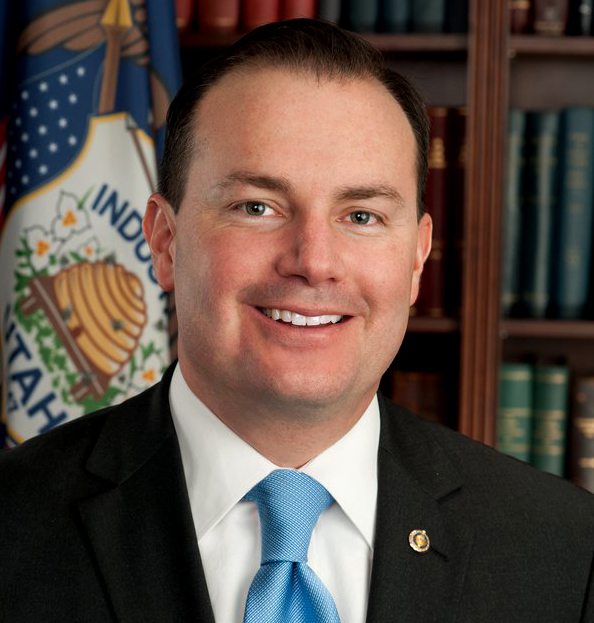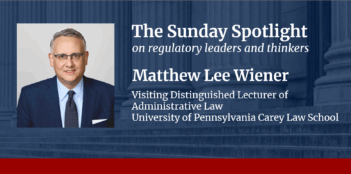
Closer congressional supervision can prevent special interests from dominating the regulatory process.
It is not every day that I have the opportunity to join with my colleagues Senator Sheldon Whitehouse (D-R.I.) and Senator Elizabeth Warren (D-Mass.) to advance the same cause. On paper, you might think that the three of us do not have much in common.
And yet, here we are—two progressive Democrats and one conservative Republican—speaking out on the same topic, because we are committed to the same mission: fighting regulatory capture in all of its forms. Our common ground on this issue is a testament to the emerging consensus among policymakers, scholars, and activists on both sides of the aisle and everywhere in between that regulatory capture is one of the most pressing political, economic, and moral issues of our time.
But too often—especially on Capitol Hill—this consensus breaks down along partisan lines. Members of both parties are guilty of railing against regulatory capture when it is politically convenient to do so, and then looking the other way when it is not. For veteran observers of Washington, this pattern of selective outrage may be predictable, but that does not make it productive.
As I see it, the only way to reduce regulatory capture is to end the conspiracy of acquiescence that has allowed it to flourish under Senates, Houses, and presidencies of every partisan combination. There is no legitimate reason why some regulatory agencies should fall under intense scrutiny for their cozy and collusive relationships with regulated industries and special interests, while others are given a pass.
To elaborate on this point, if we oppose regulatory capture within the U.S. Securities and Exchange Commission or within the Federal Reserve, we must also oppose it within the U.S. Environmental Protection Agency and the Federal Communications Commission. Likewise, if we oppose regulatory capture when it leads to the selective under-enforcement of agency rules, we must also oppose it when it produces excessive regulations that distort the market to protect incumbents.
This is the approach that is recommended in the book, Preventing Regulatory Capture: Preventing Special Interest Influence and How to Limit It. In the introduction to their book, Professors Daniel Carpenter and David Moss provide a useful definition of the phenomenon that accounts for its variety and scope. As they put it, regulatory capture is “the result or process by which regulation, in law or application, is consistently or repeatedly directed away from the public interest and toward the interests of the regulated industry, by the intent and action of the industry itself.”
But private, for-profit companies are not the only ones engaging in regulatory capture. Carpenter and Moss are quick to point out that it is not just possible, but common, for special interests other than regulated industries to capture a regulatory agency. In fact, labor unions and non-profits—no less than wealthy corporations and Wall Street megabanks—are capable of, and interested in, capturing regulators in order to advance their narrow interests.
In other words, regulatory capture, properly understood, is a symptom of the perennial tension between the public interest and the cacophony of clashing private interests at the heart of our republic. James Madison, writing in The Federalist Papers, called the inevitable conflicts that arise from this tension “the mischiefs of faction.” He believed, along with the other Framers, that the American Constitution was uniquely equipped to limit the power and influence of special-interest factions. At the core of the Founders’ constitutional design are two basic principles.
First, the laws that govern a nation and direct its economy should be written by people who are elected by—and therefore are accountable to—the public. That is why Article I of the Constitution grants all federal legislative powers to Congress—the branch that the Framers expected to be the most accountable to the people. Today, as at the time of the Founding, special-interest factions, and the government privilege that they seek, thrive in obscurity, whereas it is much more difficult to undermine the public interest when policymaking and decision-making are both visible and accessible to the average voter.
Second, the powers of government should be separated, so that the people who write the laws are not the same as those who enforce the laws or adjudicate disputes regarding their meaning. When these powers are combined in a single entity, the incentives—and potential rewards—of regulatory capture increase dramatically.
Our constitutional system was set up to operate according to these two basic principles, but this is not how the federal government works today. Today, the vast majority of federal “laws” are not passed by the House and Senate and signed by the President; they are written by unelected bureaucrats via a decision-making process that is opaque and highly technical—precisely the kind of venue that is susceptible to capture by concentrated interests. As creatures of the executive branch, these bureaucratic agencies also have the power to enforce the very rules and regulations they write. And in many cases, executive agencies wield a quasi-judicial power through administrative law courts.
Proponents of this combination of insularity and centralized power within executive agencies claim that these innovations on the Framers’ original design are necessary in order to protect against regulatory capture. But experience has shown the opposite to be true. Concentrating the powers of judge, jury, and executioner in a single governmental body made up of individuals who never stand for election makes an easy, high-value target for special-interest factions vying for access to the levers of power in pursuit of their own interests.
The point here is not to assign blame or impugn the motives of any of the parties involved in regulatory capture. I know first-hand that the men and women who run the executive-branch agencies—as well as those employed by the industries and special-interest groups affected by federal regulation—are hardworking, well-intentioned, well-educated, and highly-specialized. The vast majority of the time, the parties involved in regulatory capture are not corrupt, dishonest, or acting illegally.
But that is precisely the problem. The status-quo arrangement of incentives and power within the modern administrative state has made regulatory capture all but inevitable. The American Constitution was written by men who, as James Madison wrote in Federalist No. 10, understood that “[t]he latent causes of faction are . . . sown in the nature of man.” So the Constitution establishes a system that divides government power and makes lawmakers dependent on the people, in order to make it as difficult as possible “for the mischiefs of faction” to systematically redirect the law away from the common good.
The modern administrative state flips this theory on its head, consolidates power, and assumes that good intentions will always overcome “the latent causes of faction.” This upending of our constitutional order was not accidental, and it did not happen overnight. Over the course of the 20th century, Congress steadily surrendered its constitutional powers and responsibilities to the executive branch. And, since that period, this trend has only accelerated.
One of the unintended—but indisputable—consequences of Congress recasting itself as the backseat driver of American government has been to move the bulk of lawmaking into the bureaucracy, where the opaque and highly technical decision-making process facilitates regulatory capture by concentrated interests. This shift not only has led to bad policy, but it has also inexorably spurred public distrust for our governing institutions. So it should come as no surprise that the movement against regulatory capture is gaining momentum at this particular moment in our nation’s history.
Indeed, if there is one undisputed fact about American politics today, it is that there is a deep and growing distrust between the American people and our political system in Washington. No matter where they live or which party they support, most Americans no longer believe that we have a federal government of, by, and for the people.
And in many cases they are right. Increasingly what we have today is a government of unelected officials with a degree of job security that would make tenured professors envious; a government by well-connected market incumbents and fashionable special interests; and a government for the benefit of political and economic elites.
Regulatory capture has played an important role in building today’s discredited status quo and insulating it from reform. So any effort to win back the trust of the American people—as both political parties will surely hope to do in the years ahead—must include an agenda to rein in the agencies and regulate the regulators.
The goal of our reforms cannot be to target one regulatory body or another, while leaving untouched the dysfunction and culture of capture throughout the rest of the bureaucracy. We need to elevate principle over party and pursue structural reforms that make Congress once again responsible, both in the sense of discharging its constitutional duties and in terms of holding itself accountable to the people.
Two such reforms that I support are the Regulations From the Executive in Need of Scrutiny (REINS) Act and the Regulatory Accountability Act of 2015. Each in its own way would put regulatory agencies and the rules that they issue under closer congressional supervision—which is to say, they would make what is now a headless fourth branch of government accountable to the American people.
These are not partisan proposals. And there is no good reason why they cannot achieve the support of both parties. Strengthening Congress so that policymaking is more transparent and accountable to the public is not a partisan project—it is about putting the federal government back to work for the American people.
This is a goal that I know Senator Whitehouse and Senator Warren share, even though we may not always agree on how to get there. And it is that common commitment to restoring a government of, by, and for the people that gives me hope for the future of this country and for the future of our collective fight against regulatory capture.
This essay is part of The Regulatory Review’s sixteen-part series, Rooting Out Regulatory Capture.




